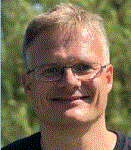Project management and partner banking as tools for the recovery concept in Ukraine
Abstract
The main purpose of this study is to investigate the effect of project management and partnership banking. Due to the shortage of investment, Ukraine always needs to plan for finance resource. All over the world the partnership banking is becoming an increasingly common and attractive type of investment in projects. In the conditions of modern Ukraine, the need to restore industrial and infrastructure construction projects one can predict a significant growth in the construction services market and the need of investment. In this study, the ways of possible increasing of investment in construction industry have been discussed based on the use of a logical-structural approach in project management and partnership banking as a source of investment.
Keywords
Full Text:
PDFReferences
1. Sorokin PA. Social and Cultural Dynamics: A Study of Change in Major Systems of Art, Truth, Ethics, Law and Social Relationships. In: Extending Horizons Books.
2. Sukhorukov A, Yehorova-Hudkova T, Sukhorukova O, et al. Economic security of state: diagnosis, design and stability of system. Journal of interdisciplinary research. 2022.
3. Snooks G. The Dynamic Society: Exploring the Sources of Global Change. Routledge; 1996.
4. Sidak V, Yegorova-Gudkova T, Bojko M, et al. Islamic concept of financing as project and safe for the development of social super-system. Economics, Finance and Management Review; 2020.
5. Guide to project management/Trans.from English Under the editorship S.D. Bushuev, 2nd ed. Business Ukraine; 2000.
6. Sukhorukov AI, Kharazishvili YM. Modeling and forecasting of socio-economic development of the regions of Ukraine: Monograph.
7. Yehorova-Hudkova TI. The system of economic security of the state in conditions of change: Transdisciplinarity, self-organization, nature-like approach: Monograph. Odesa City Typography; 2021.
8. Haken H, Haken-Krell M. Secrets of successful perception. Synergetics as the key to the brain (German). Deutsche Verlagsanstalt; 1992.
9. Yegorova-Gudkova Tatyana. Projecting of steady complexity economic systems on self-organizing principles as a component of anti-crisis strategy. In: Proceedings of the 2012 International Conference on Trends and Cycles in Global Dynamics and Perspectives of World Development.
10. Knyazeva EN, Kurdyumov SP. Synergetics: new universalism or natural philosophy of the era of post-nonclassical science? Philosophy of Nature Today; 2009.
11. Sukhorukov AI. Methodological recommendations for level assessment economic security of Ukraine. NIPMB; 2003.
12. Vlasyuk OS, Sukhorukov AI, Nedin IV, et al. System of economic security of the state. National International Security; 2010.
13. Yehorova-Gudkova TI. Worldview and methodological aspects of designing sustainable economic systems: The Law of the Golden Section. Coll. science works of the North-Eastern National University named after Volodymyr Dahl. Series: Management. Luhansk. 2014; 26(1): 169-184.
14. Rose J. Survey of Cybernetics. A Tribune to Dr. Norbert Wiener. Iliffe Books, 1970.
15. Lorenz EN. The essence of chaos. University of Washington Press; 1995.
16. Lorenz HW. Nonlinear Dynamical Economicsand Chaotic Motion. Springer; 1993.
17. Vitali S, Glattfelder JB, Battiston S. The network of global corporate control. Chair of Systems Design.
18. Prigozhin I, Stengers I. Time, Chaos, Quantum: Towards a Solution to the Time Paradox. M.: Editorial URSS, 2003.
19. Khitsenko VE. Self-organization: formation of the theory and perspective of social programs. Available online: http://captador.livejournal.com/233506.html (accessed on 2 June 2023).
20. Soroko EM. Golden intersections, processes of self-organization and evolution systems: Introduction to the general theory of system harmony. LIBROKOM Book House.
21. Logical-structural approach and its use for analysis and planning of activities for programs and projects in various fields. Available online: https://blanki-ua.com.ua/blank_zayav/22208/index.html (accessed on 2 June 2023).
22. Yehorova-Hudkova TI. Countering the crisis: the impact of project management, planning and marketing research. Market Economy: Modern Management Theory and Practice. 2022; 21(2): 40-41.
23. Coase RG. The nature of the firm. In the book: Theory of the firm. Economic School; 1995.
24. Schneider F. Size and Development of the Shadow Economy of 31 European and 5 other OECD Countries from 2003 to 2013: A Further Decline. Available online: http://www.econ.jku.at/members/Schneider/files/publications/2013/ ShadEcEurope31_Jan2013.pdf (accessed on 2 June 2023).
25. Schneider F. The Shadow Economy and Work in the Shadow: What Do We (Not) Know? Available online: http://ftp.iza.org/dp6423.pdf (accessed on 2 June 2023).
26. Sukhorukov A. Innovation model in construction. E&FN Spon Chapman &Hall; 1996.
(51 Abstract Views, 14 PDF Downloads)
Refbacks
- There are currently no refbacks.
Copyright (c) 2024 Arkadii Sukhorukov, Tatiana Yegorova-Hudkova, Maksim Bojko
License URL: http://creativecommons.org/licenses/by/4.0/

This site is licensed under a Creative Commons Attribution 4.0 International License.

